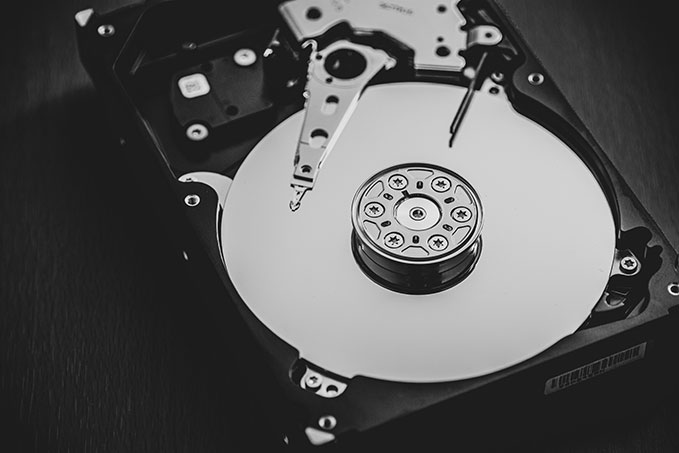Top Tips for Ensuring Secure Data Destruction in Your Cyber Security Strategy
Just How Proper Information Damage Adds to Robust Computer Security Services and Mitigates Threats of Information Breaches
In today's electronic landscape, the importance of appropriate information destruction can not be overstated, as it serves as a basic element of comprehensive computer system safety and security solutions. The implications of inadequate data damage expand beyond plain conformity; they can exceptionally impact a company's cybersecurity position and credibility.
Relevance of Data Devastation
In today's digital landscape, the importance of information damage can not be overstated. As organizations progressively depend on electronic assets, the prospective risks related to information violations and unauthorized access enhance. Effective data destruction is a critical component of a thorough details security strategy, safeguarding delicate info from falling under the hands of malicious actors.
When information is no longer required, just erasing files or formatting difficult drives wants. Residual data can usually be recouped utilizing readily offered devices, presenting considerable threats to both organizations and individuals. This emphasizes the necessity for durable data damage methods that ensure all data is irretrievably gotten rid of.
Furthermore, governing compliance mandates, such as GDPR and HIPAA, stress the responsibility to shield sensitive information, including its proper disposal. Non-compliance can bring about serious lawful consequences and financial penalties. data destruction. Thus, incorporating effective data devastation procedures not just enhances security yet likewise fortifies a company's track record and reliability

Methods of Secure Information Erasure
Numerous reliable techniques of secure data erasure can be utilized to make sure that sensitive info is permanently removed from storage space devices. One commonly identified technique is data overwriting, which involves replacing existing data with arbitrary patterns numerous times. This method substantially lowers the chances of data healing, although it may not work versus sophisticated forensic techniques.

Physical devastation is likewise a reputable strategy, where storage devices are made pointless with shredding, crushing, or incineration. This approach makes sure that information can not be recuperated whatsoever but needs careful handling of dangerous products.
Last but not least, specialized software application devices designed for secure information erasure supply performances that comply with various erasure requirements. These devices often consist of features like verification processes to confirm successful information damage.
Employing these methods in combination can improve information security and reduce the risks connected with information violations, ensuring that sensitive information is not accidentally subjected.
Legal and Compliance Considerations
The approaches employed for protected data erasure not just offer to secure delicate information but likewise needs to line up with lawful and compliance structures regulating data security. Organizations are required to abide by different regulations, such as the General Information Protection Policy (GDPR), the Medical Insurance Transportability and Responsibility Act (HIPAA), and the Payment Card Sector Data Safety Criterion (PCI DSS) These policies mandate specific methods for data taking care of and destruction, making sure that delicate and individual information is irretrievably erased when no longer required.
Failing to abide with these legal demands can cause significant fines, including penalties and reputational damages. Additionally, companies need to keep records of data damage processes, showing conformity throughout audits or examinations. This paperwork not just safeguards against legal repercussions yet also reinforces count on with clients and stakeholders, showcasing a dedication to information security.
Incorporating legal and compliance considerations into data devastation practices is necessary for any kind of company. It lessens the risk of information violations and shows a positive method to securing delicate info, ultimately cultivating a society of security and liability throughout the organization.
Effect on Cybersecurity Position
Effective data devastation considerably enhances a company's cybersecurity stance by reducing the possible assault surface for cyber risks. When sensitive information click to read is not correctly ruined, it stays available to malicious stars who can manipulate this details for unauthorized access, identity theft, or business espionage. By applying robust data destruction methods, organizations can effectively minimize the threat of data violations and improve their general safety framework.
Additionally, the safe disposal of out-of-date or unnecessary data not just safeguards delicate info yet likewise assists organizations abide by sector guidelines and requirements. Failing to appropriately destroy data can bring about severe lawful effects and reputational damage, more compromising an organization's cybersecurity position.

Inevitably, prioritizing effective data devastation is vital for promoting a durable cybersecurity posture, making sure that companies stay alert against evolving cyber threats while safeguarding their vital possessions and stakeholders.
Finest Practices for Organizations
Carrying out best techniques for data destruction is essential for organizations aiming to secure sensitive details and minimize cybersecurity threats. Firstly, organizations ought to establish a detailed information devastation policy that details duties and procedures. This policy must adhere to appropriate regulations, such as GDPR or HIPAA, guaranteeing legal consistency.
Second of all, it is vital to make use of approved information sanitization techniques, consisting go of information wiping, degaussing, and physical destruction, customized to the sort of data and storage tool. Utilizing licensed experts for data destruction solutions improves the dependability of these methods.
Moreover, organizations must maintain a detailed inventory of all data storage space devices, ensuring that all obsolete or replaced devices undergoes destruction. Routine audits of data devastation practices can assist determine weaknesses and enhance conformity.
Staff member training is another critical element, as staff must understand the relevance of information damage and abide by established protocols. Ultimately, organizations should record all data destruction tasks to supply accountability and traceability, which can be very useful during audits or in the occasion of a breach.
Conclusion

One extensively recognized technique is data overwriting, which includes changing existing information with arbitrary patterns multiple times.The techniques employed for protected data erasure not just serve to protect sensitive info yet also needs to straighten with legal and conformity structures governing information protection. These policies mandate details methods for information taking care of and damage, ensuring that personal and delicate information is irretrievably erased when no longer needed.
By executing robust information destruction protocols, organizations can efficiently decrease the threat of data breaches their website and enhance their overall safety framework.
In verdict, proper data damage is important for enhancing computer safety and security services and mitigating the risks linked with information breaches. - data destruction